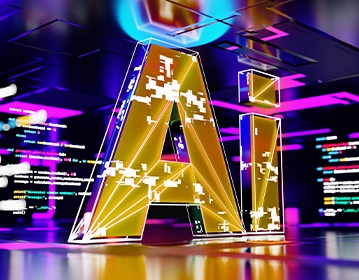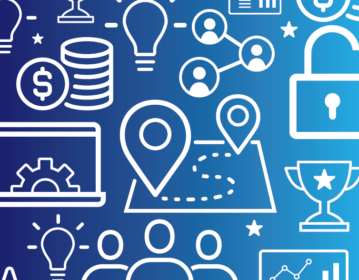
A Business-Driven Roadmap is an IT planning framework driven by business goals and the potential for smart use of technology to further those business goals. Besides fostering better alignment between IT and company goals, this approach can be a boon to IT departments and the people within them who aspire to do more meaningful work.
By definition, business-driven technology planning is informed by the product roadmaps of key vendors, but it should not be dictated by them – not even in the face of coercive vendor tactics for compelling upgrades and updates. To point, of course, is SAP, with its planned deadline for ending mainstream support of its widely implemented ECC 6 ERP platform in favor of S/4HANA, and Oracle, with the ways it is pushing customers toward its proprietary cloud infrastructure.
Go Your Own Way
If your business needs to align with something that the vendor’s upgrade, cloud, or new product provides — and the price is right — by all means, take advantage of it. On the other hand, if your Business-Driven Roadmap planning cries out for investment and innovation in other parts of your technology infrastructure, you should be prepared to go your own way. This is seen frequently with companies who have spent years tailoring their ERP to meet the needs of their business but now want to make greater investments in CRM, analytics, machine learning, and the Internet of Things — areas where their ERP vendors’ offerings are not necessarily the most cost-effective or best-in-class options.
Previous articles here have addressed how a Business-Driven Roadmap can help a CIO communicate more effectively with the CEO and board about technology choices and tradeoffs. Do you want the majority of your IT budget going to fund an ERP upgrade or to enable the introduction of new products? Options such as using third-party support to remove the pressure to upgrade can be presented in the broader context of opportunities, threats, and risk mitigation — not just costs avoided but investments in innovation and competitive advantage.
Building Careers around Diverse Skills
The benefits of departing from the vendor’s roadmap may not be immediately apparent to every member of the IT team, particularly those who have built their careers around specialization and certification for a specific vendor’s technology stack. Their preference will tend to be to adopt that vendor’s latest and greatest offering, whether or not it fits into the business-driven plan.
What even those motivated by resume-enhancement need to understand is that working with technology products that must deliver concrete business results will always create a better impression than merely being able to tell an ERP upgrade survival story.
As a company diversifies its technological foundation, the IT cadre — including system architects, application developers, DBAs, and ERP system administrators — has an opportunity to diversify skills. They are the people with the knowledge required to integrate the current enterprise infrastructure with AWS cloud services, nontraditional databases like MongoDB, IoT data streaming services, mobile apps, JavaScript frameworks, and all the elements of a next generation IT infrastructure.
ERP is a Mosaic
The future of IT is hybrid. The cloud will not replace the corporate data center anytime soon, nor will all the new database types, data management technologies, and analytics replace the relational database as a workhorse of corporate computing. The ERP suites will cede some ground to best-in-class apps for specialized functions, many of them in the cloud. Yet ERP will continue to anchor most corporate enterprise architectures — with the understanding that ERP limitations can’t be allowed to hold the organization back when it has goals it can address more effectively with another technology platform.
ERP emerged in an era when best-of-breed technology platforms had earned a bad name, and ERP suites were supposed to provide an all-in-one solution. Yet no technology or tool is the right one for every job, and using a single technology platform as a cure for all ills tends to produce disappointing results. Today, the build versus buy, suite versus best-of-breed equation has shifted again.
One reason is the emergence of technologies such as microservices and containerization, which make it easier to isolate elements of an application infrastructure. One weakness of monolithic ERP systems is that they tend to grow brittle, so that every change introduced requires extensive re-testing and validation. “By contrast, modern microservice architectures let AD&D professionals test and deploy each enhancement individually,” Forrester Research analysts Liz Herbert, Duncan Jones, and George Lawrie write, in a report on how enterprises can position themselves to take advantage of next-generation technologies[1]. “Containerization makes it easy to deploy secure services at will in the cloud or on mobile devices. This in turn enables the business to embrace new business models, such as equipment maker companies selling direct to consumers and/or bundling subscription services with preventative maintenance.”
Your Business-Driven Roadmap versus Business-As-Usual
A good Business-Driven Roadmap guards against excessive complexity as well as excessive reliance on one monolithic platform, seeking the optimal balance. Yet it’s doubtful that many organizations will conclude that one technology vendor has the right answer for all their requirements. Most will see a case for diversification, particularly as data and application integration technologies continue to improve.
The best way for IT teams to prove their value is to stretch to meet these new requirements, not to assume that they can continue to do business as usual. That is why a Business-Driven Roadmap benefits not only the organization as a whole, but every IT team dedicated to delivering business results.
1 Liz Herbert, Duncan Jones, and George Lawrie, “Create A Modern Software Strategy With AI Driven Platforms And Their Ecosystems,” Forrester Research, March 21, 2019.












































